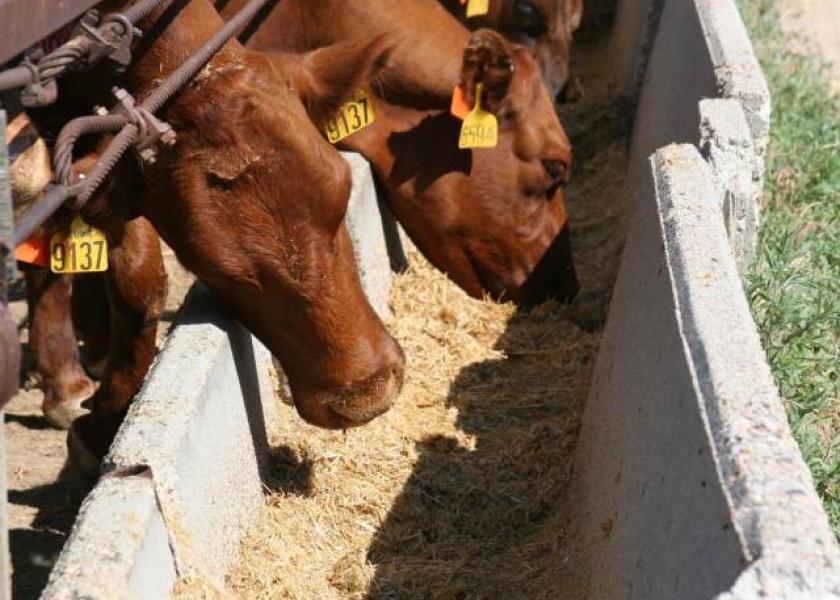Drylot Feeding Cows in the Summer may be Cost Competitive with Grazing Pasture under Current Feed Prices

The University of Nebraska-Lincoln has conducted research studies for cow-calf production systems to evaluate profitability. In Nebraska, pasture rental rates have increased rapidly over the last several years due to numerous factors. At the same time, availability of crop residue and ethanol co-products have encouraged evaluation of year around or seasonal dry lot feeding of beef cows as alternative production systems.
In this analysis, seven cow-calf production systems were selected to represent various production systems across Nebraska. Four represent conventional cow-calf production systems and utilize data from the Gudmundsen Sandhills Lab (west central Nebraska) and the Dalbey-Halleck Research Unit (eastern Nebraska). The Gudmundsen Sandhills Lab systems included March calving, June calving and August calving cows grazing Sandhills range in the summer. The fall and winter feed program includes cornstalk grazing, distillers grains supplement and hay. When calves are weaned, level of distillers grains supplementation and hay feeding for these systems varies with calving date. The Dalbey-Halleck system is a March-April calving system with summer pasture grazing, cornstalk grazing, as well as hay being fed during calving. These four systems were compared to one another as well as three alternative production systems.
The first alternative system examined double stocking of summer pasture and replacing half of the grazed forage with a combination of distillers grains and crop residue fed as a supplement. The second alternative system utilizes intensive management where summer calving cows are fed in a dry lot year-round. The third intensive management system utilizes summer calving cows where dry lot feeding occurs in the summer with cow-calf pairs grazing cornstalks supplemented with distillers grains during the fall and winter.
The results of this study showed that year-round intensive management of beef cows in a dry lot to be the most expensive production system. However, the intensive management system utilizing corn stalk grazing along with distillers grains supplement and summer dry lot feeding was very cost competitive with conventional production systems. This was especially true as grass prices increased from the base price level of $40 per pair per month for summer grazing and distillers grains prices held constant at $200 ton or decreased.
In summary, this analysis indicates that dry lot feeding of summer calving cows may be a cost competitive production system when grass prices are high, distillers grains prices are comparatively low, and corn stalks are readily available for grazing. This is the scenario in much of Nebraska under current market conditions. This system complements spring calving cow-calf production systems. Late calving cows from spring calving herds could be moved to a summer calving program and terminal bulls used. Cow-calf producers in areas where crop residue and ethanol co-products are readily available could develop seasonal dry lot feeding systems that are cost competitive with cow-calf production systems utilizing summer grass and cornstalks.
This article is a summary of the 2015 Beef Report “An Economic Analysis of Conventional and Alternative Cow-Calf Production Systems for Nebraska.” Jason M. Warner, Andrea K. Watson, Karla H. Jenkins, Rick J. Rasby, Kate Brooks, and Terry J. Klopfenstein were collaborators on this research study and report. The report is summarized by Aaron Berger, Nebraska Extension Beef Educator.







